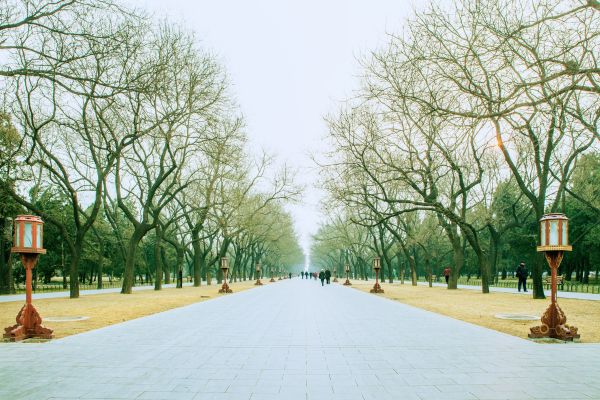
Click here to learn more about Case system in Chna.
The Supreme People’s Court (SPC) issued the Implementing Rules of the Provisions on Case Guidance (《關(guān)于案例指導(dǎo)工作的規(guī)定》實施細則) in May 2015, which further clarified the details of how the Guiding Case System works.
I. What are Guiding Cases like?
Guiding Cases are composed of Titles, Keywords, Highlights, Legal provisions, Facts, Holding, and Rationale, accompanied by notes including the judges’ names.
According to the “Opinions and Sample Drafts on Compiling and Submitting Guiding Cases” (關(guān)于編寫報送指導(dǎo)性案例體例的意見及樣稿) promulgated by the SPC:
1. The Title is composed of the parties’ names and the cause(s) of actions.
2. The Keywords generally are no more than seven.
3. The Highlights shall usually be summarized in one paragraph, briefly summarizing and distilling the important rules, ideas, or methods embodied in the Guiding Cases which may guide the trial of similar cases.
4. The Legal provisions shall list the law and the number of provisions that are most relevant to the highlights of the judgment.
5. The Facts shall accurately and concisely reflect the basic situation of the case. Targeted and detailed clarification should be given to the facts, circumstances, and legal application issues related to the highlights of the judgment.
6. The Holding shall briefly describe the proceeding and results of the litigation.
7. The Rationale shall elaborate on the correctness and fairness of the court’s ruling and focus on the main issues of the case or divergent opinions. The Rationale here can be appropriately supplemented to, but not contradict, the reasons stated in the original judgment.
To sum up, the Highlights, Facts, Holding, and Rational are all required to be accurate and concise. In other words, the Guiding Cases are not the original of the judgment, but a very shortened version. Besides, the compilers of the Guiding Cases may add their own opinions to the reasons for the court holding (Rational) based on the original texts.
II. How to Apply the Guiding Cases
1. Comparing the facts and referring to the highlights of the judgments
When a pending case is similar to a certain Guiding Case in terms of basic facts and legal application, the court shall render the ruling by reference to the judgment’s Highlights of this Guiding case.
Just as some SPC judges pointed out, the difference between China’s Guiding Cases and the precedents of other countries lies in whether there are clear main points of the judgments. [1] The adjudication rules established by China’s Guiding Cases have been summarized by the SPC in the “Highlights of the judgment” section, to which judges can directly refer; while judges in case law countries need to summarize the core basis and the rationale from the precedents by themselves, and then apply them to the case under trial.
2. Guiding Cases shall not be used as a legal basis
When courts refer to Guiding Cases to hear similar cases, they shall quote the Guiding Cases as the rationale but not as a legal basis.
This is because China is a statutory law country, where judgments can only be rendered in accordance with laws rather than cases.
However, the Guiding Cases provide a reference for the judges, hence it may be cited as an important reason for court holdings. This can not only enhance the persuasiveness of the judgment, but also present the judges’ thinking and reasons when making the judgment in the judicial documents, and thus enhance the transparency of the judgment.
3. Judges shall quote the highlights of the judgments
If judges intend to cite relevant Guiding Cases in the judicial documents, they shall clearly cite the number and Highlights of the Guiding Cases in the section of the rationale of judgment.
According to the SPC judges, disclosing the Highlights referred to in the judgment meets the requirements of justice openness and transparency, and it also facilitates the public supervision of judges.[2]
III. The Exit Mechanism of the Guiding Cases
Where a Guiding Case encounters one of the following circumstances, it will be abolished and no longer have the guiding function: (1) it conflicts with a new law, administrative regulation, or a judicial interpretation; or (2) it is replaced by a new guiding case.
Generally, in a case law jurisdiction, a precedent being overturned does not necessarily mean that it is invalid. More often, whether the precedent is binding is determined by judges who cite it.
However, in China, the Guiding Cases is more of the courts’ exploration of cutting-edge legal issues. Therefore, they are prone to be outdated and be replaced by rules formally established by law. Moreover, Guiding Cases work to unify the legal application. If there is a conflict between the old and new cases, they cannot play this role. Based on this, China designs an exit mechanism for such cases.
[1] 郭鋒,吳光俠,李兵:《〈關(guān)于案例指導(dǎo)工作的規(guī)定〉實施細則》的理解與適用[J].人民司法,2015(17):30-36.
[2] Ibid.
Photo by Stan Y (https://unsplash.com/@stanyw) on Unsplash
Contributors: Guodong Du 杜國棟 , Meng Yu 余萌









